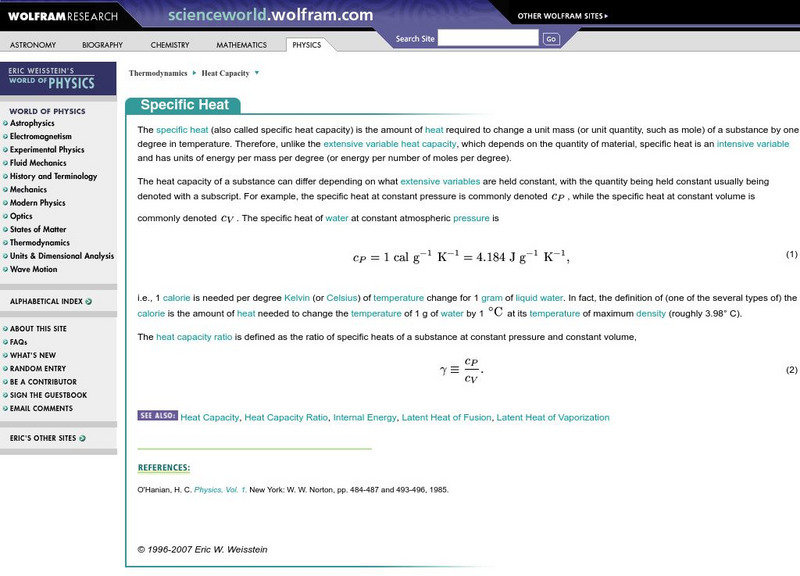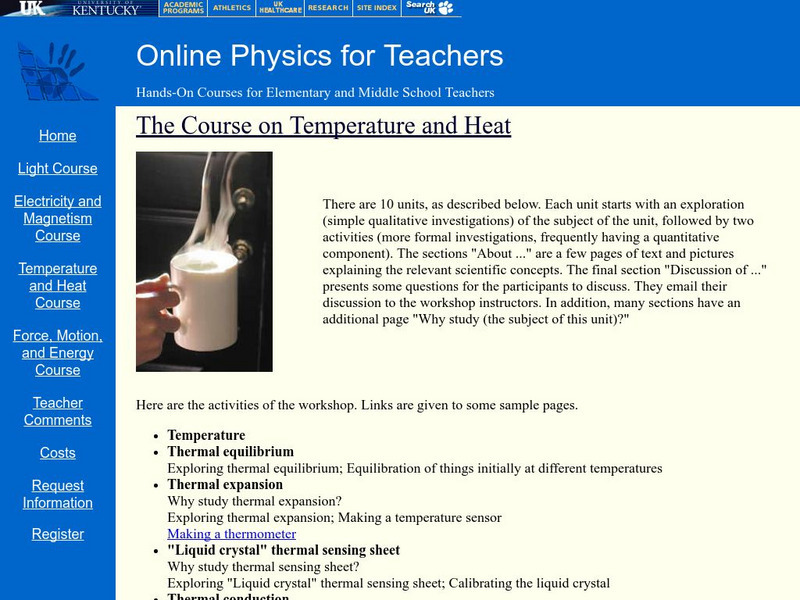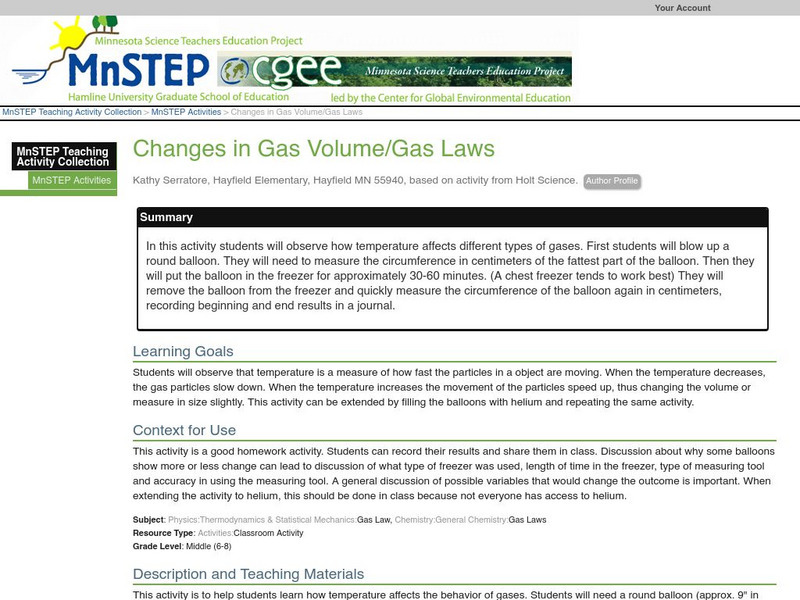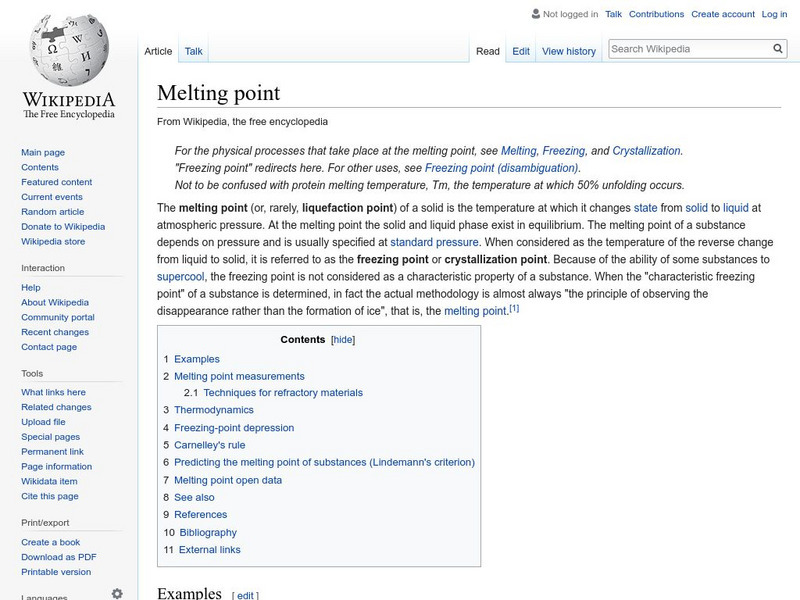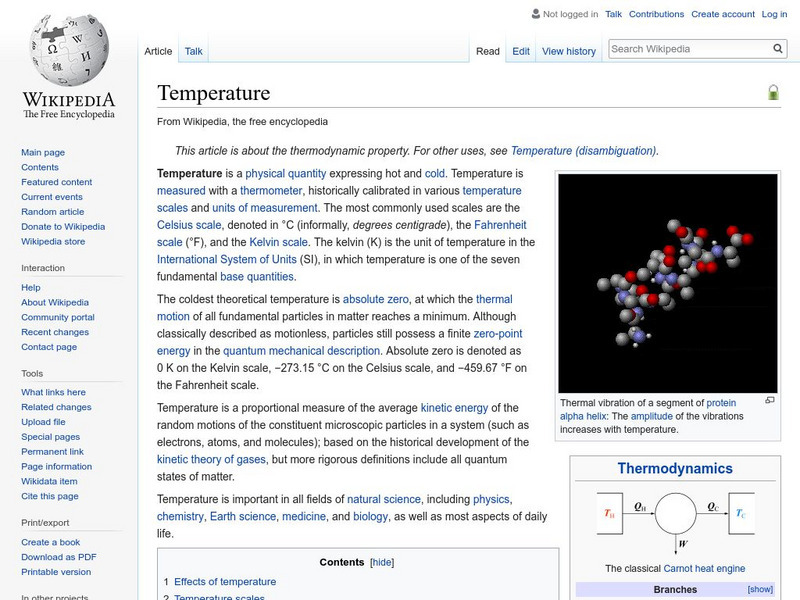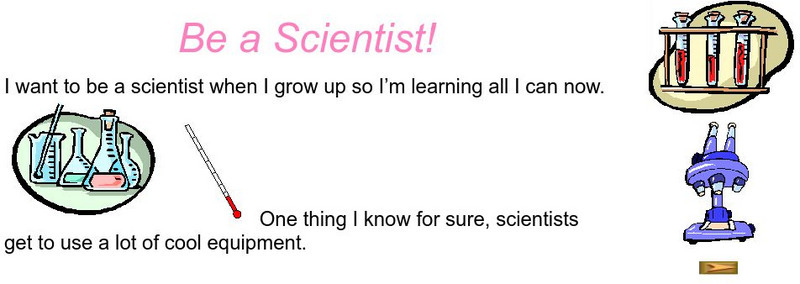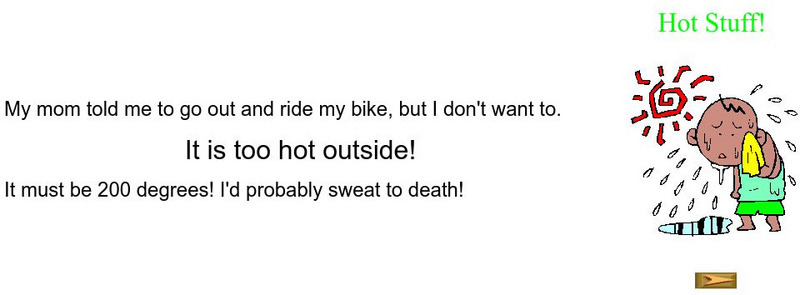Georgia State University
Georgia State University: Hyper Physics: Speed of Sound
Physics tutorial on measuring the speed of sound in dry air. An interactive form allows the student to practice solving problems involving the temperature dependence of the speed of sound.
Cosmos 4 kids
Cosmos4 Kids: What Makes a Star?
Understand the three main characteristics of a star by reading this reference page and watching the short video.
E-learning for Kids
E Learning for Kids: Science: Atlantic Ocean: What Is Evaporation?
Explore with Julia how wind speed and temperature affect evaporation rate.
E-learning for Kids
E Learning for Kids: Science: Titanic Shipwreck: How Does Heat Travel?
David is exploring the Titanic shipwreck. He needs to stay warm down below in the water. Help him learn about heat and temperature.
University of Regina (Canada)
University of Regina: Math Central: Integers: Grade 6 (Using Thermometer)
Scroll partway down the page to find this lesson on decimals which incorporates the use of thermometers at an activity centre.
USA Today
Usa Today: Weather Basics: Understanding Humidity
This article is a guide to understanding humidity and related weather concepts. Includes helpful definitions of multiple terms.
Wolfram Research
Wolfram Science World: Specifiic Heat
This site has information on specific heat,the amount of heat required to change a unit mass of a substance by one degree in temperature. Included are many links and formulas.
University of Kentucky
Virtual Workshop: The Course on Temperature and Heat
On line course on Temperature and Heat for graduate credit or professional development, that emphasize hands on activities you can use in your classroom.
University of Illinois
University of Illinois Urbana Champaign: Other Forecasting Methods
This site contains a couple different ways that one can forecast the weather. Methods include the Climatology Method, the Analog Method, and Numerical Weather Prediction.
University of Illinois
University of Illinois Urbana Champaign: Ww2010: Units of Temperature
The Kelvin, Celsius and Fahrenheit temperature scales are discussed. Site lists and explains formulas for converting between the different scales.
Next.cc
Next: Climate
Complete these three activities to learn about climate, severe weather, and global warming. Includes links to explore related material.
Science Education Resource Center at Carleton College
Serc: Mini Lab: Investigating Gas Laws
In this activity, students investigate two gas laws: Charles and Boyle's. They will determine the relationship between gases and certain variables (temperature, volume and pressure), then watch a demonstration and determine what...
Science Education Resource Center at Carleton College
Serc: Changes in Gas Volume/gas Laws
In this activity students will observe how temperature affects different types of gases. First students will blow up a round balloon. They will need to measure the circumference in centimeters of the fattest part of the balloon. Then...
Science Education Resource Center at Carleton College
Serc: Envisioning Climate Change Using a Global Climate Model
Students run the climate modeling software, Educational Global Climate Modeling Suite (EdGCM), to visualize how temperature and snow coverage might change over the next century.
TryEngineering
Try Engineering: Temperature Tactics
Learners practice the engineering design process as they explore devices used to measure changes in temperature. They work in teams to design, build, test, and evaluate their own temperature gauge made from everyday materials.
Museum of Science
The Atom's Family: Building a Better Pyramid
Help the Mummy conserve energy inside the pyramid by adding layers of insulation. By using this site you will find out what happens when you add more layers of insulation.
Wikimedia
Wikipedia: Melting Point
Wikipedia offers a brief description of the term, "Melting point," including hyperlinked terms.
Wikimedia
Wikipedia: Absolute Zero
Wikipedia offers several paragraphs of detailed information on absolute zero, the lowest temperature that can be obtained in any macroscopic system.
Wikimedia
Wikipedia: Temperature
Wikipedia provides detailed information on the topic of temperature. Offers much information on units and measurements of temperature.
Beacon Learning Center
Beacon Learning Center: Be a Scientist
Students practice estimating Celsius temperatures using a thermometer in this interactive web lesson. Boiling, freezing, and human body temperatures are used as benchmarks for estimating.
Beacon Learning Center
Beacon Learning Center: Hot Stuff
Students practice estimating Fahrenheit temperatures using a thermometer in this interactive web lesson. Boiling, freezing, and human body temperatures are used as benchmarks for estimating.
The Math League
The Math League: Temperature
This site contains defines temperature and how it is expressed in the metric system, with degrees Celsius.
Crescent Public Schools
The Internet Science Room: The Kinetic Theory & Phase Change
This tutorial helps students understand the Kinetic Theory, which explains the effects of temperature and pressure on matter as it goes through phase changes.
Crescent Public Schools
The Internet Science Room: The Gas Laws
A chemistry tutorial which explains the Gas Laws, and provides examples for further understanding.








